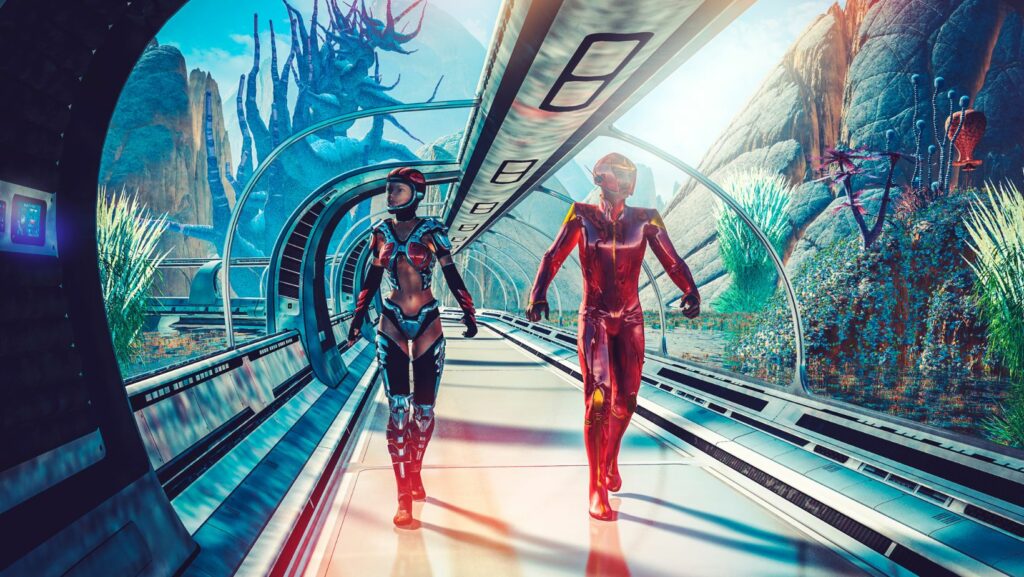Sci Fi Book to Movie Adaptations
Sci-fi book to movie adaptations captivate audiences because they bring imaginative worlds to life. The visual medium allows for intricate settings and futuristic technology to be showcased in ways text alone cannot. For instance, the richly detailed desert planet of Arrakis in the “Dune” series gains a new dimension through intricate CGI. 
Character development in movies often enhances the viewer’s connection to the story. Seeing beloved characters like Katniss Everdeen in “The Hunger Games” can deepen emotional engagement. The actors’ interpretations add depth and nuance to characters, strengthening the narrative impact. Sound and visual effects play pivotal roles in enhancing the sci-fi experience. Spaceships in “Star Wars” and interstellar travel in “Interstellar” become breathtaking spectacles with high-quality effects. These elements create immersive experiences that books alone may struggle to achieve.
Adaptations also invite new audiences to explore the original books. A successful film can spark interest in the source material, leading to increased readership. For instance, the “Harry Potter” films led many viewers to discover J.K. Rowling’s books, broadening the fan base. Moreover, film adaptations create opportunities for creative interpretations. Directors and screenwriters often introduce new elements or perspectives, providing fresh takes on classic stories. While this can be controversial, it contributes to the ongoing relevance of the original work. Ultimately, sci-fi book to movie adaptations offer multifaceted appeal, blending visual, emotional, and intellectual elements to expand and enrich the original narratives.
Iconic Sci Fi Book To Movie Adaptations
Science fiction books have inspired some of the most iconic movies in cinematic history. These adaptations often bring unique visual experiences that expand the original narratives. Ridley Scott directed “Blade Runner,” which is based on Philip K. Dick’s novel “Do Androids Dream of Electric Sheep?” Released in 1982, it became a cult classic. The movie imagines a dystopian future where synthetic humans called replicants struggle for freedom. The visual style, inspired by film noir, combined with Vangelis’s memorable score, cemented its place as a sci-fi masterpiece. Unlike the book, the film focuses heavily on the moral complexity of the protagonist, Rick Deckard, and the replicants.
“Dune,” directed by Denis Villeneuve and released in 2021, adapts Frank Herbert’s complex novel. The film captures the intricate political, ecological, and social themes of the book. With advanced visual effects and faithful character portrayals, it presents the desert planet Arrakis and its inhabitants compellingly. The movie’s scope and attention to detail make it a standout adaptation. The success echoed the intricate world-building found in Herbert’s writing, adding layers through stunning visuals and immersive soundscapes.
Stanley Kubrick’s “2001: A Space Odyssey,” based on Arthur C. Clarke’s short story “The Sentinel,” redefined sci-fi cinema when it premiered in 1968. The film’s groundbreaking special effects and philosophical themes distinguish it from other adaptations. The story explores human evolution, artificial intelligence, and extraterrestrial life through the iconic HAL 9000 and the journey to Jupiter. While the source material is a short story, Kubrick and Clarke expanded it into a screenplay that pushed the boundaries of storytelling and visual effects in film.
Comparing Books To Their Movie Adaptations
Sci-fi book-to-movie adaptations often evoke strong reactions from fans. Examining the elements that determine their success or failure provides deeper insights into this creative process. The degree of fidelity to the source material is crucial in sci-fi adaptations. Films like “The Hunger Games” closely follow Suzanne Collins’ novels, preserving core plot points and character arcs.  However, some adaptations, such as “I, Robot,” diverge significantly from their literary origins, prioritizing visual spectacle over narrative coherence. Audience expectations often hinge on this balance, affecting overall reception.
However, some adaptations, such as “I, Robot,” diverge significantly from their literary origins, prioritizing visual spectacle over narrative coherence. Audience expectations often hinge on this balance, affecting overall reception.
Adaptations frequently involve enhancements and eliminations to fit the cinematic format. Peter Jackson’s “The Lord of the Rings” trilogy expanded character backstories and added new scenes to enrich the narrative, thereby improving viewer engagement. Conversely, films like “Ender’s Game” condensed complex subplots to streamline the story, which led to mixed reviews from readers. These changes highlight the adaptive choices filmmakers make to capture the essence of the original tales within the confines of a movie’s runtime.

